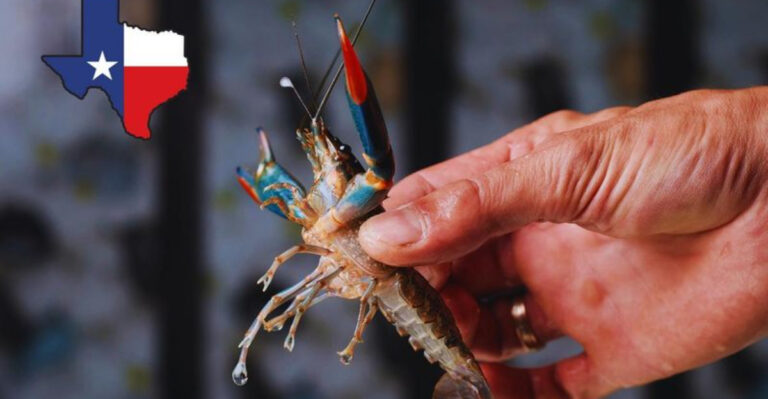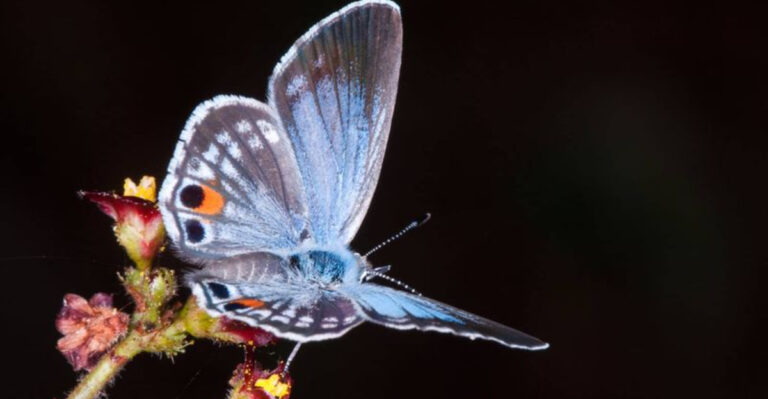The Enduring Giants: How Some Woolly Mammoths Lived Long After The Ice Age

Most of us think woolly mammoths disappeared with the last Ice Age about 10,000 years ago. But amazingly, some of these shaggy giants actually stuck around much longer – surviving on remote islands until just 4,000 years ago!
While Egyptian pyramids were being built, the last mammoths were still trudging across isolated Arctic islands.
Their surprising survival story offers fascinating clues about extinction, adaptation, and how some species manage to hang on against incredible odds.
1. Island Refuges Saved The Last Mammoths

Wrangel Island, a remote spot in the Arctic Ocean, became a final sanctuary for woolly mammoths. Rising sea levels after the Ice Age cut this chunk of land off from the mainland, creating a protected pocket where a small mammoth population survived.
These island dwellers outlasted their mainland cousins by thousands of years! While continental mammoths vanished around 10,000 years ago, the Wrangel Island herd kept going until roughly 4,000 years ago.
Scientists call these isolated spots “refugia” – places where species can survive when conditions elsewhere become impossible.
2. Shrinking Bodies Helped Them Adapt

The last mammoths weren’t the giants we typically imagine. They underwent a fascinating change called “island dwarfism,” shrinking to about the size of large modern elephants – much smaller than their 13-foot-tall Ice Age ancestors.
Limited food resources on isolated islands triggered this evolutionary response. Smaller bodies required less food to survive, giving these mini-mammoths a better chance at staying alive in their restricted habitat.
Some Wrangel Island mammoths stood just 6 feet tall at the shoulder, roughly half the size of mainland woolly mammoths during the Ice Age peak.
3. Climate Change Wasn’t Their Final Downfall
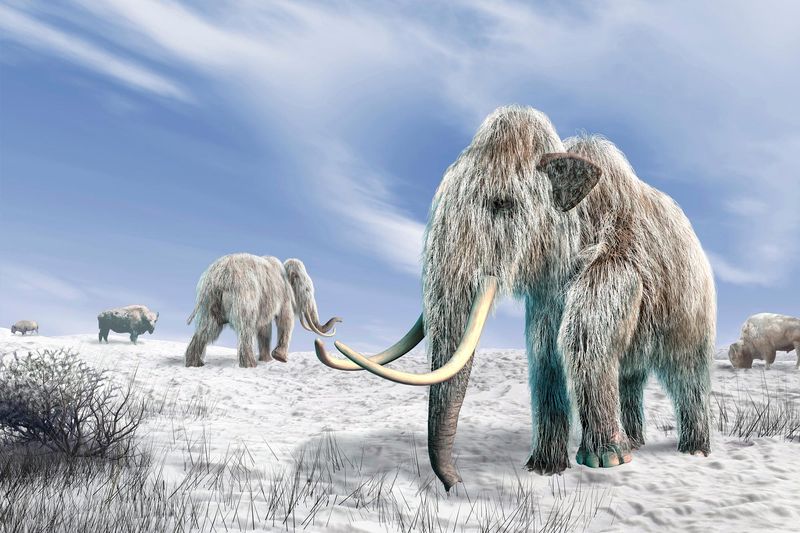
Unlike their mainland relatives who disappeared as the world warmed, the last island mammoths faced different threats.
Wrangel Island’s climate remained relatively stable and suitable for mammoths even after the Ice Age ended.
What finally pushed them to extinction? Likely a perfect storm of problems: genetic issues from inbreeding, occasional extreme weather events, and possibly human hunters who eventually reached the islands.
Fresh research suggests their tiny population became genetically vulnerable over time, losing their ability to adapt to even minor environmental changes.
4. DNA Reveals Their Survival Secrets
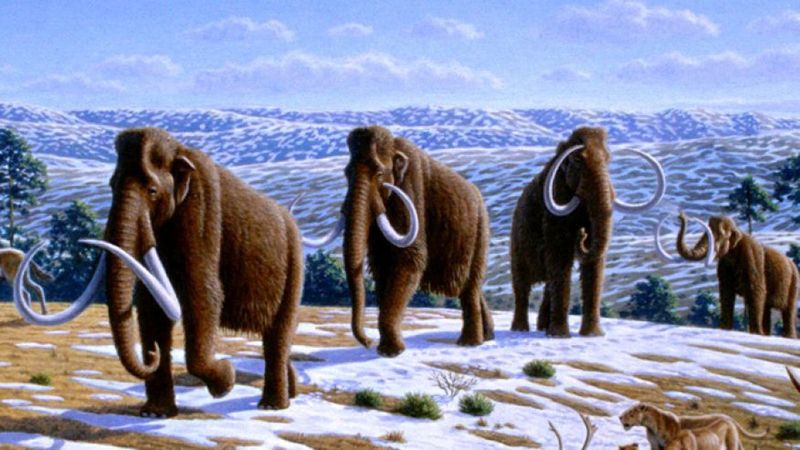
Ancient DNA extracted from the remains of these late-surviving mammoths tells an incredible story.
Scientists have sequenced complete genomes from Wrangel Island specimens, giving us a genetic time capsule of their final days.
The DNA shows concerning signs of genetic deterioration. These last mammoths carried harmful mutations that likely affected male fertility, their sense of smell, and even their social behaviors.
Their genetic material also reveals they had less diversity than mainland populations, making them vulnerable to disease and environmental changes.
5. They Witnessed Human Civilization’s Rise
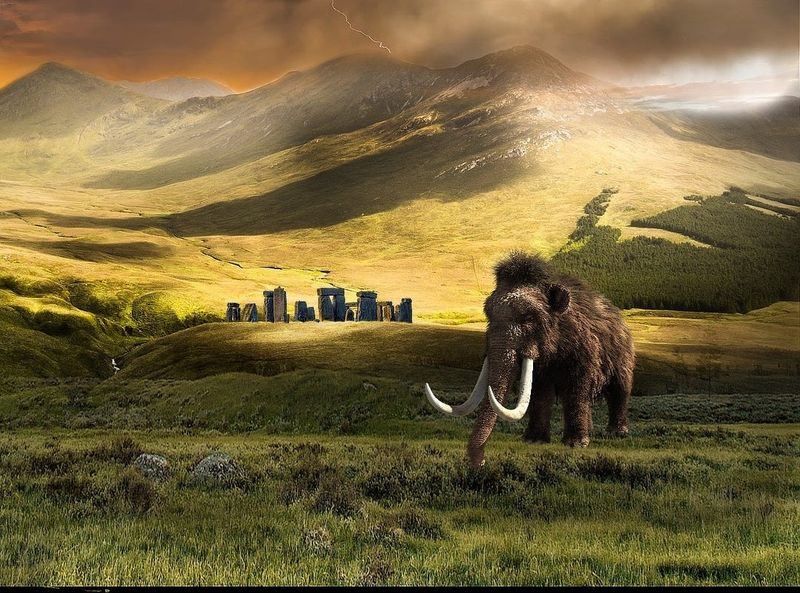
While the last mammoths roamed Wrangel Island, humans were building the Great Pyramids of Egypt!
These final mammoths lived during a time when writing was being invented, bronze tools were revolutionizing human society, and the first cities were developing.
To put this in perspective: mammoths survived long enough that they could have theoretically been depicted in early human writing systems. The ancient Minoan civilization on Crete was flourishing at the same time the last mammoths were still alive.
This overlap between woolly mammoths and advanced human societies challenges our typical timeline of prehistoric and historic eras.
6. Preserved Permafrost Mammoths Tell Their Tale
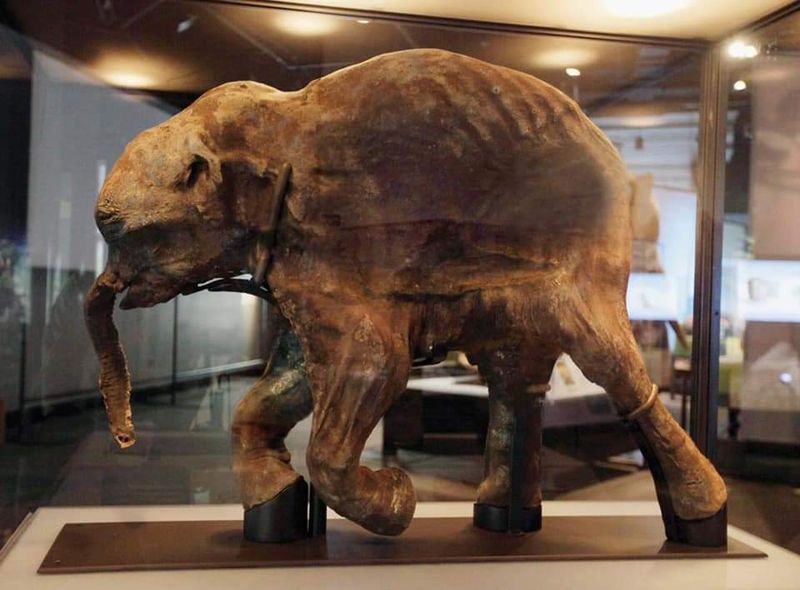
The frozen Arctic ground has gifted scientists with extraordinarily preserved mammoth specimens. Unlike most ancient creatures known only from bones, some mammoths emerge from the permafrost with skin, hair, and even internal organs intact!
These frozen time capsules allow researchers to study what these animals ate during their final years. Stomach contents reveal their last meals, while tissue samples provide clues about their health and environment.
One famous baby mammoth nicknamed “Lyuba” was so well-preserved that scientists could examine her mother’s milk still present in her system, showing what late-surviving mammoths fed their young.
7. Mystery Of The Missing Predators
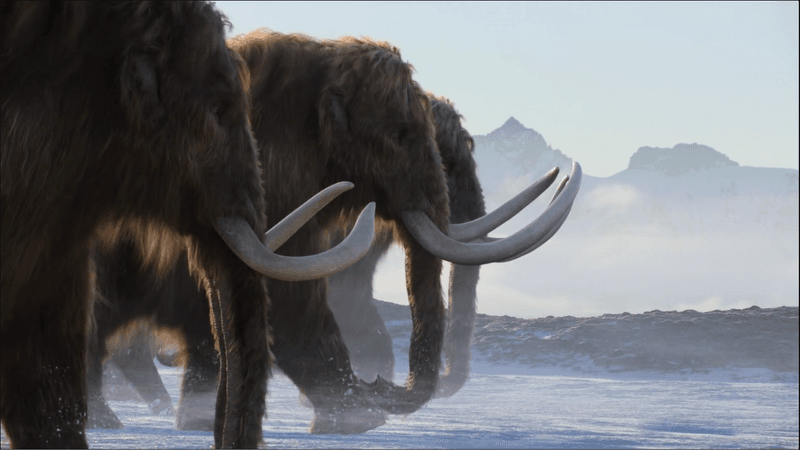
Island mammoths enjoyed a unique advantage – freedom from many natural predators! Large carnivores like lions, wolves, and saber-toothed cats couldn’t reach the isolated islands, removing a major threat to mammoth survival.
Without these predators keeping their numbers in check, mammoths could potentially overpopulate their limited habitat.
This predator-free environment created different selection pressures than those faced by mainland populations.
Rather than evolving for defense or speed, island mammoths adapted primarily to maximize resource efficiency in their restricted environment, contributing to their smaller size and unique characteristics.
8. Ancient Human Encounters With The Last Herds
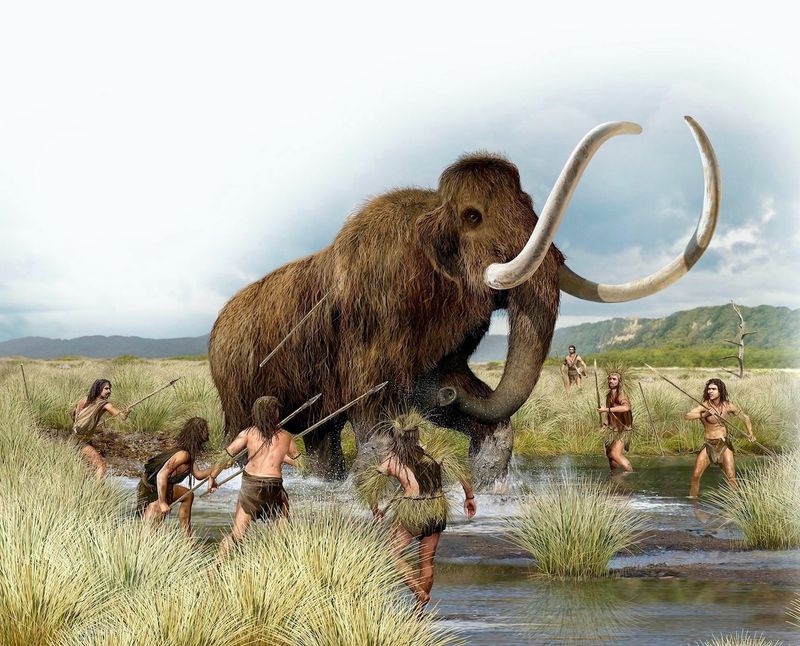
Archaeological evidence suggests humans may have encountered – and hunted – some of the last surviving mammoth populations. Stone tools found on Wrangel Island hint at human presence during the final days of the mammoths.
These wouldn’t have been primitive cavemen, but relatively advanced maritime hunters with boats capable of reaching remote islands. Their hunting technology was sophisticated enough to take down even these massive creatures.
Some researchers debate whether human hunting delivered the final blow to these vulnerable populations or if the mammoths were already doomed by their genetic problems and isolation.
9. Tusks Record Their Changing Diet
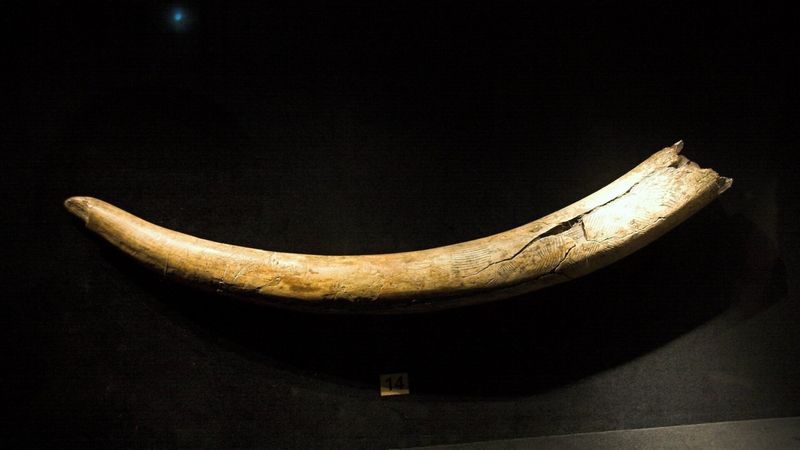
Mammoth tusks function like tree rings, recording information about their lives year by year. Scientists analyze growth patterns and chemical isotopes in these massive ivory structures to reconstruct the diets of the last mammoths.
The tusks tell us these final island dwellers experienced nutritional stress. As their island habitat changed, the plants they relied on became scarcer or less nutritious.
Stress lines in tusks from late-period mammoths show periods of near-starvation that mainland mammoths rarely experienced.
These ivory records also reveal seasonal migration patterns stopped as mammoths became confined to their shrinking island worlds.
10. Genetic Bottlenecks Sealed Their Fate
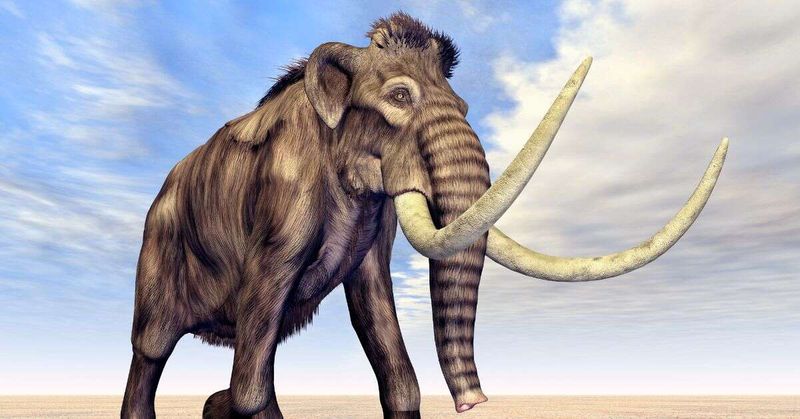
The last mammoth populations experienced what scientists call a “genetic bottleneck” – their numbers dropped so low that inbreeding became unavoidable. Imagine a community reduced to just a few dozen breeding individuals!
This genetic isolation had devastating consequences. Harmful mutations accumulated without the benefit of new genetic material to counterbalance them.
Recent studies of Wrangel Island mammoth DNA show they carried mutations affecting coat color, fertility, and even neurological functions.
The final mammoths likely suffered from reduced immune function and developmental problems, making survival increasingly difficult even without external threats.
11. Climate Stability Created A Time Capsule

Wrangel Island’s climate remained surprisingly mammoth-friendly even as the rest of the world warmed. The cold Arctic waters surrounding the island created a bubble of stable, cool conditions – essentially a “time capsule” of Ice Age habitat.
This climatic stability allowed plants that mammoths depended on to continue growing long after they disappeared elsewhere.
Steppe grasses, sedges, and herbs that made up the mammoth’s diet flourished here while vanishing from mainland areas.
Even today, Wrangel Island’s plant communities contain species that were common during the Ice Age but rare elsewhere, showing how this isolated spot preserved ancient ecological conditions.
12. De-Extinction Dreams Target These Last Survivors
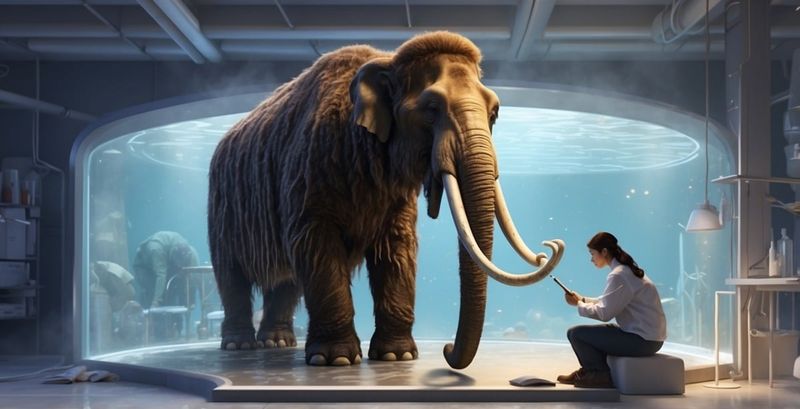
Modern scientists are using the well-preserved DNA from these final mammoths in ambitious de-extinction projects.
The genomes of Wrangel Island mammoths are particularly valuable because they’re thousands of years younger than most mammoth specimens.
Companies like Colossal Biosciences are attempting to create mammoth-elephant hybrids by editing Asian elephant DNA with mammoth genes.
They’re focusing on cold-adapted traits like thick fur, extra fat layers, and specialized blood to handle freezing temperatures.
The goal isn’t just bringing back mammoths – some scientists believe these creatures could help restore ancient grassland ecosystems and even slow climate change by maintaining permafrost through their grazing habits.


